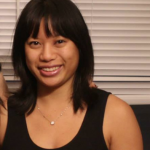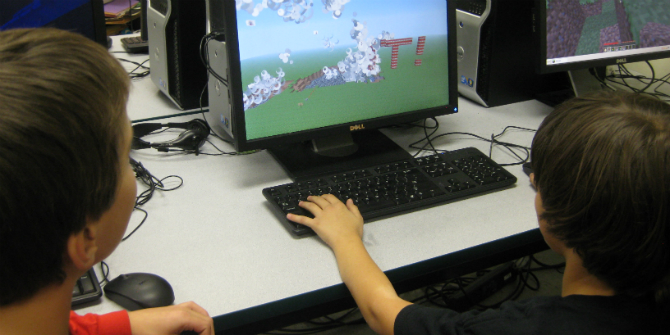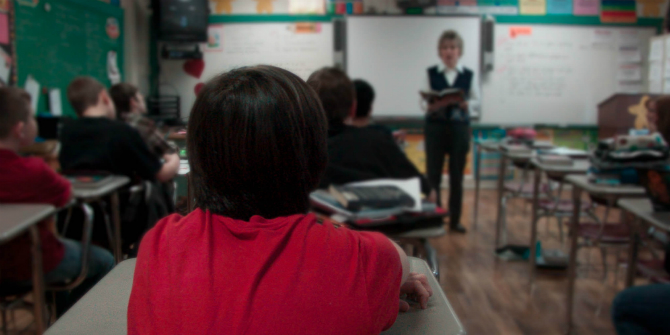 Children learn through experience and feedback. Paulina Haduong explores how we can support young people in learning how to productively engage in dialogue and operate as courteous digital citizens. She looks at one particular online community, Connected Camps, that offers a more positive experience for young people and takes into account users’ youth and desire to learn. Paulina is a PhD student at Harvard Graduate School of Education and an Affiliate at the Berkman Klein Center for Internet & Society at Harvard University. Her work explores the intersections of youth, education, and technology. [Header image credit: K. Jarrett, CC BY 2.0]
Children learn through experience and feedback. Paulina Haduong explores how we can support young people in learning how to productively engage in dialogue and operate as courteous digital citizens. She looks at one particular online community, Connected Camps, that offers a more positive experience for young people and takes into account users’ youth and desire to learn. Paulina is a PhD student at Harvard Graduate School of Education and an Affiliate at the Berkman Klein Center for Internet & Society at Harvard University. Her work explores the intersections of youth, education, and technology. [Header image credit: K. Jarrett, CC BY 2.0]
Blocking bad behaviour with ‘zero tolerance’
Learning to navigate the web means learning to handle – and overlook – hurtful comments, trolling and other forms of negative online content and harassment. Indeed, the Pew Research Center reports that 40% of adult internet users have experienced online harassment, while 73% have witnessed someone else be harassed. Statistics vary for young people, but averages across studies appear to conclude that one in four teens may have experienced cyberbullying, while one in six may have cyberbullied others. Negative comments and malicious users run rampant online, and seasoned internet users will caution ‘Don’t feed the trolls’, believing that silence is the only way to deal with vicious attacks.
This may not be the best framing, or even the most successful method, as media reports of online stalking and harassment have become commonplace. Indeed, even though the internet is an incredible medium for information, community and opportunity, it can be difficult to find the ‘useful’ information when there’s so much ‘garbage’ to wade through. As online platforms and policy-makers work to create new methods to deal with online harassment (such as counter-speech), young people in particular should consider what role their support network (on- and offline) may play (see Urs Gasser and John Palfrey’s seminal book, Born digital).
Space to fail and room for feedback
When malicious comments and/or users are identified on online platforms, they are usually deleted/blocked or hidden from other users, through algorithmic and/or human moderation (for more on what online platforms can do for young people, see positive online communities). These users, often infuriated by being blocked, may end up turning to another platform to continue to express their views, jumping from platform to platform. As educators, how we can help these users, particularly if they’re young people, learn how to productively engage in dialogue and operate as courteous digital citizens? Platforms should certainly consider how to create safe spaces for the majority of their users, but in some ways this isn’t different from schools in the US that suspend problematic students under zero-tolerance policies. Although we may not have data about recidivism among online harassers, we know that when young people are shut out of physical spaces for learning, they are more likely to experience future behavioural issues and struggle with academics. We also know that bullies are often victims of bullying and other forms of violence as well.
School zero-tolerance policies in the US don’t take into account young people’s normal developmental stages when considering their lapses in judgement; neither do the policies of online communities. For young people to learn, they need space to fail and room for feedback, which may increase their ‘grit’ and resilience, and help them develop critical higher-order thinking skills. How can platform designers and learners’ support networks (peers, teachers, informal educators, parents, family members and other mentors/role models) help young people understand their mistakes, empathise with the experiences of online survivors of harassment, and grow into mature digital citizens? And when young people witness negative online behaviour, how can we help them intervene more often as bystanders, and promote positive communication?
Minecraft: a safe space for play and learning
One space where young people are creating, playing and communicating with others is Minecraft. Players can ‘mine’ for Lego-like blocks (of natural resources) and combine them in different ways to ‘craft’ various objects and tools. Players do everything from building a home and defending it from zombies to participating in vast communities and designing elaborate castle structures. Although a player’s experience can vary vastly, one place where young people are being encouraged to grow and learn is , where camp counsellors (high school students) encourage middle-school players, and act as role models of good citizenship and positive online participation by participating in the community and giving feedback to younger players. Like any online space, Minecraft servers also experience problems with trolls and other forms of online harassment, but Connected Camps does a great job of encouraging resilience and productive dialogue.
Unlike online platforms designed for adults, Connected Camps takes into account users’ youth and desire to learn, working with young people (and occasionally involving their parents) to help them understand how to participate and collaborate in online communities. When playing Minecraft, young people new to the community often ‘grief’ (or harass) by accident (a phenomenon that is likely not unique to Minecraft). In traditional online communities, these users might immediately be removed from the community and excluded from play, but Connected Camps’ counsellors work with users to help them understand boundaries and respect. By receiving feedback on their behaviour, young users can develop resilience and learn social norms that will carry them through their future interactions online as they expand their online participation beyond Minecraft and other communities specific to learning.
Family guide to Minecraft
Support networks for these young users’ online experiences can – and should – involve more than their online counsellors, however, and this is a space where parents, older siblings and other family members can play a critical role in helping young people develop good citizenship skills. As Michael Dezuanni and Anna Whateley have said on this blog before, “Minecraft parenting is rewarding but challenging – the distance between what children and parents know is potentially immense.”
To help with closing that gap, a group of researchers at the Berkman Klein Center for Internet & Society at Harvard University, in conversation with Mimi Ito, Katie Salen, and the Connected Camps team, developed a guide and FAQ for families with children who play Minecraft, to help answer some of the questions families may have about what their children are doing online. It is meant to be a starting point, with helpful key terms, answers to frequently asked questions and pointers to additional resources, and should be useful for supporting children’s positive Minecraft experiences across educational, social and other dimensions.
Notes
For more about Berkman Klein’s efforts in the youth space, please see www.youthandmedia.org.






